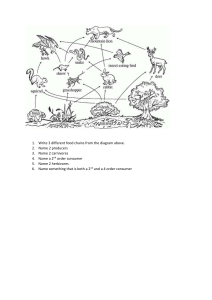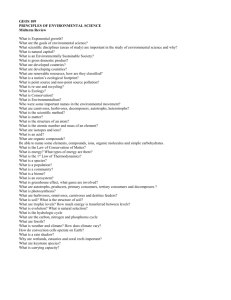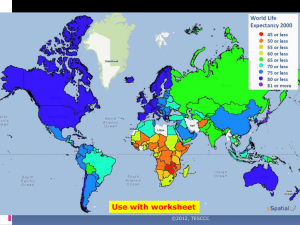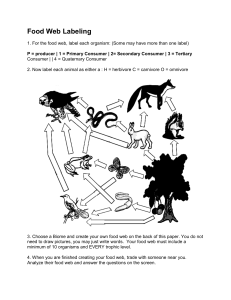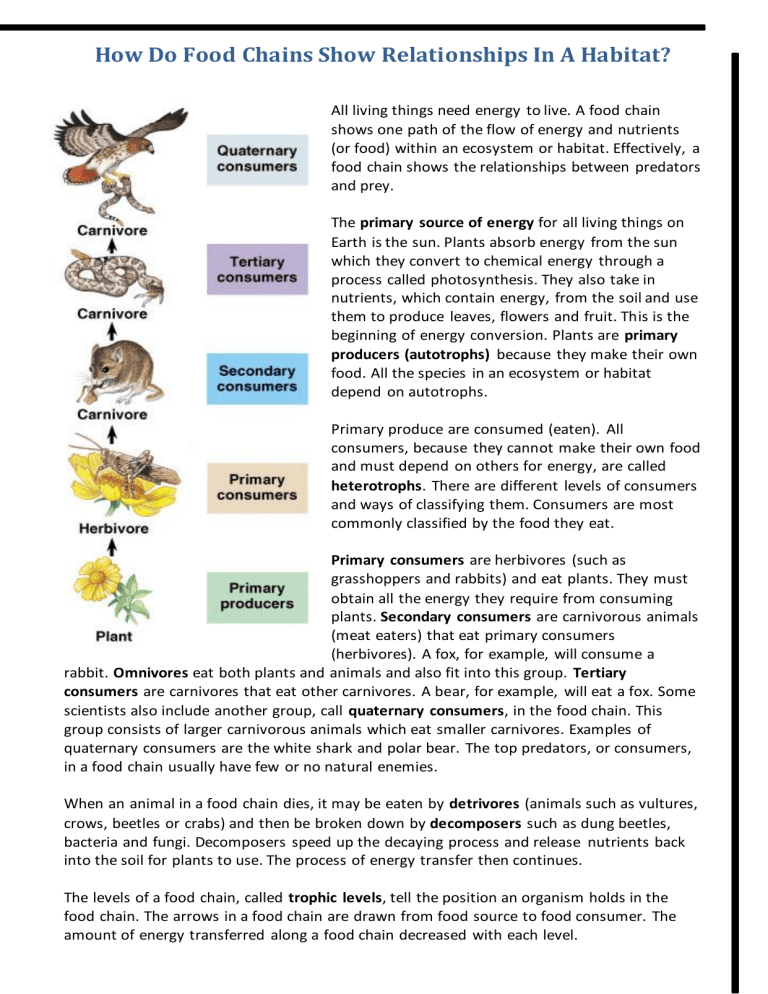
How Do Food Chains Show Relationships In A Habitat? All living things need energy to live. A food chain shows one path of the flow of energy and nutrients (or food) within an ecosystem or habitat. Effectively, a food chain shows the relationships between predators and prey. The primary source of energy for all living things on Earth is the sun. Plants absorb energy from the sun which they convert to chemical energy through a process called photosynthesis. They also take in nutrients, which contain energy, from the soil and use them to produce leaves, flowers and fruit. This is the beginning of energy conversion. Plants are primary producers (autotrophs) because they make their own food. All the species in an ecosystem or habitat depend on autotrophs. Primary produce are consumed (eaten). All consumers, because they cannot make their own food and must depend on others for energy, are called heterotrophs. There are different levels of consumers and ways of classifying them. Consumers are most commonly classified by the food they eat. Primary consumers are herbivores (such as grasshoppers and rabbits) and eat plants. They must obtain all the energy they require from consuming plants. Secondary consumers are carnivorous animals (meat eaters) that eat primary consumers (herbivores). A fox, for example, will consume a rabbit. Omnivores eat both plants and animals and also fit into this group. Tertiary consumers are carnivores that eat other carnivores. A bear, for example, will eat a fox. Some scientists also include another group, call quaternary consumers, in the food chain. This group consists of larger carnivorous animals which eat smaller carnivores. Examples of quaternary consumers are the white shark and polar bear. The top predators, or consumers, in a food chain usually have few or no natural enemies. When an animal in a food chain dies, it may be eaten by detrivores (animals such as vultures, crows, beetles or crabs) and then be broken down by decomposers such as dung beetles, bacteria and fungi. Decomposers speed up the decaying process and release nutrients back into the soil for plants to use. The process of energy transfer then continues. The levels of a food chain, called trophic levels, tell the position an organism holds in the food chain. The arrows in a food chain are drawn from food source to food consumer. The amount of energy transferred along a food chain decreased with each level. How Do Food Chains Show Relationships In A Habitat? - 2 Use the text on the previous page to complete the following. 1. What is the difference between a primary source of energy, a primary producer and a primary consumer? Give one example of each from the text in your explanation. 2. What is the relationship between secondary, tertiary and quaternary consumers in a food chain? Give an example of each. ____________________________________________________________________________ ____________________________________________________________________________ ____________________________________________________________________________ 3. Explain the difference between an autotroph and a heterotroph. 4. Which two words describe the final group of organisms in a food chain responsible for speeding up the decaying process? __________________________ _________________________ 5. Classify the following organisms, which belong in marine habitats, according to their position in the food chain. Use the words in the box. Primary producer primary consumer secondary consumer Tertiary consumer quaternary consumer a) b) c) d) e) Whale Phytoplankton (can photosynthesise) Seal Herring Zooplankton (cannot photosynthesise) f) g) h) i) j) Water flea Bass Algae Crayfish Kingfisher (bird) 6. Suggest 2 ways organisms in a food chain could be classified other than primary producers or primary, secondary, tertiary or quaternary consumers. Auto___________________ or _____________________ _______________________or______________________ or omnivore
